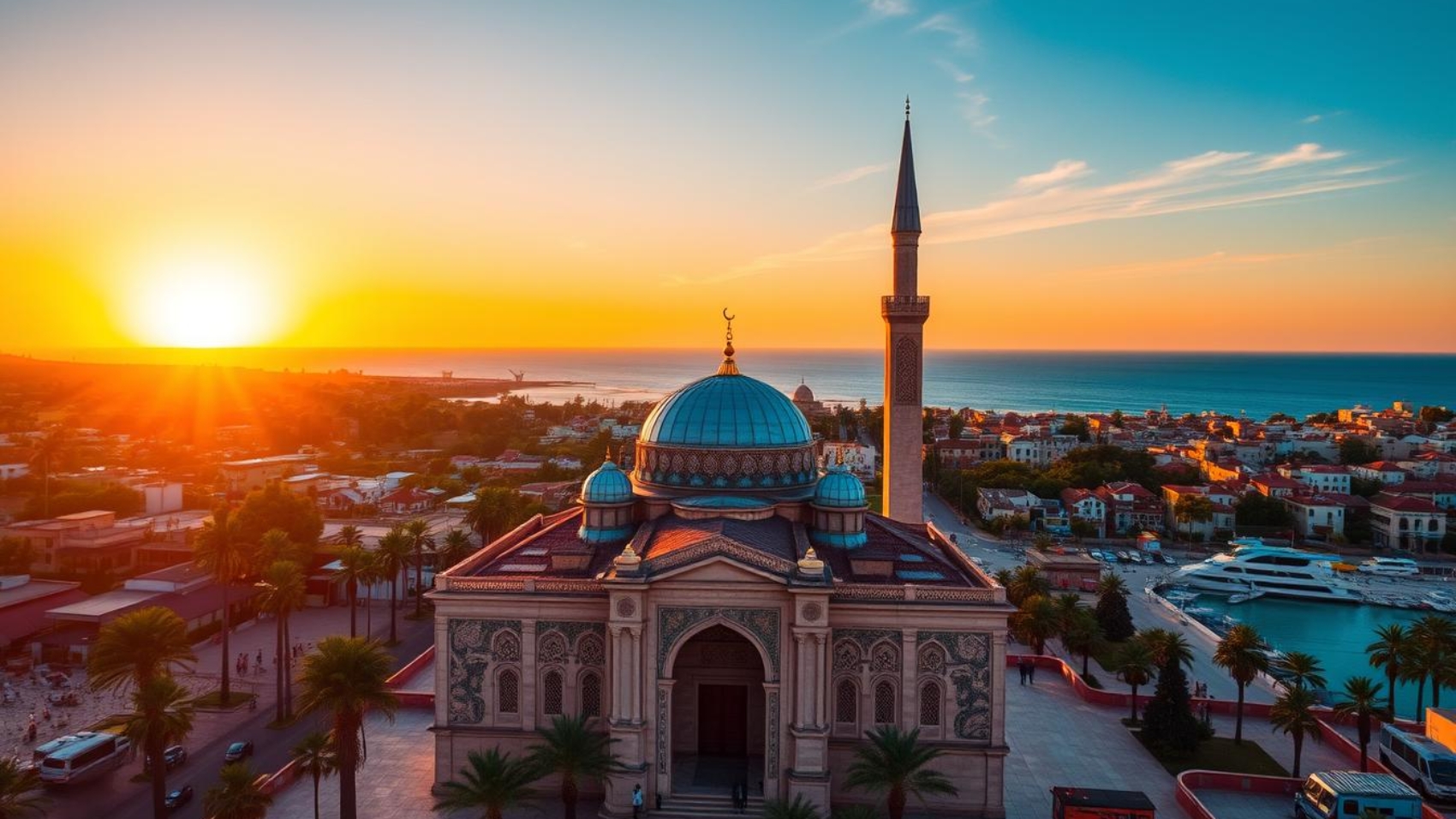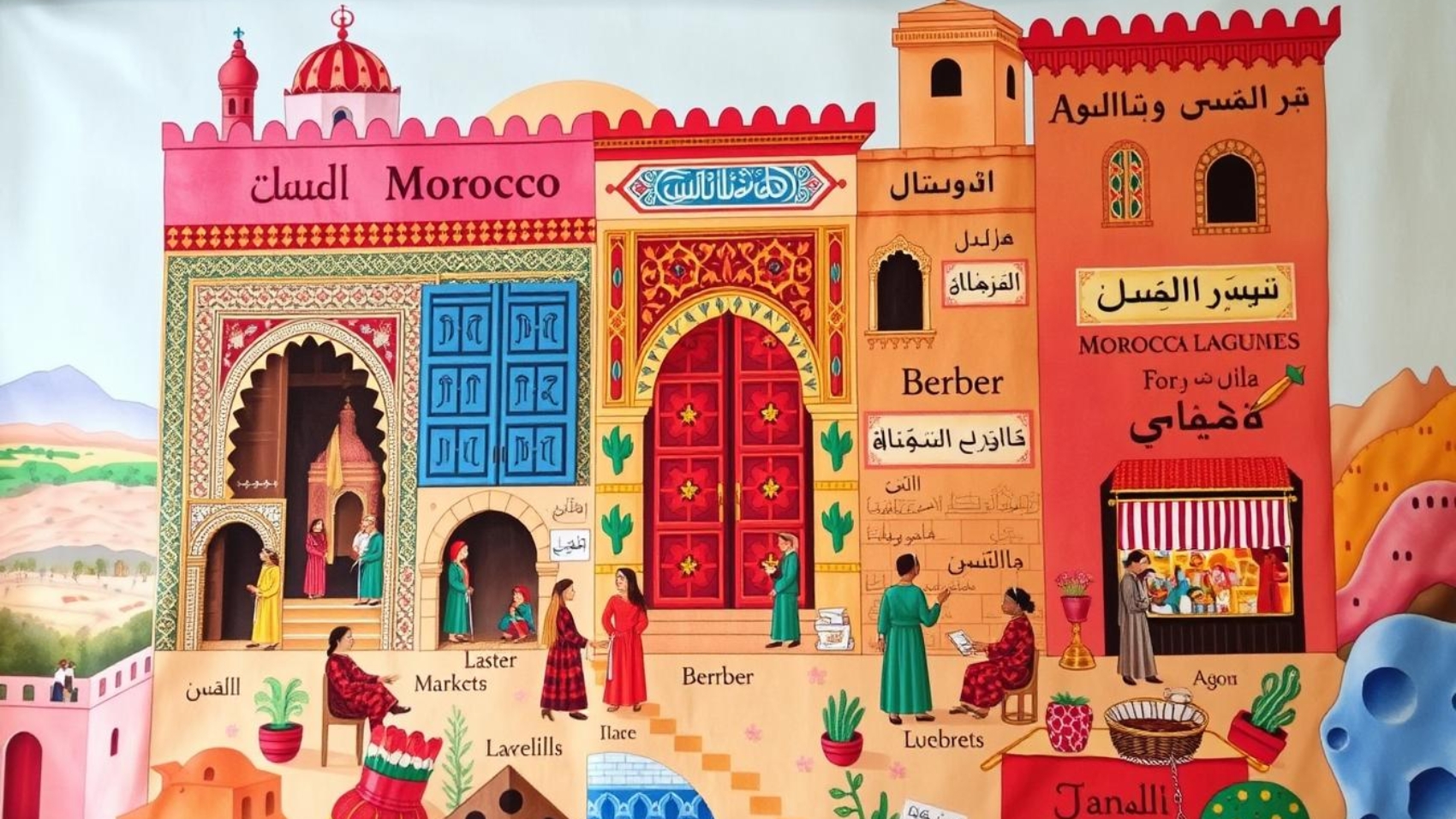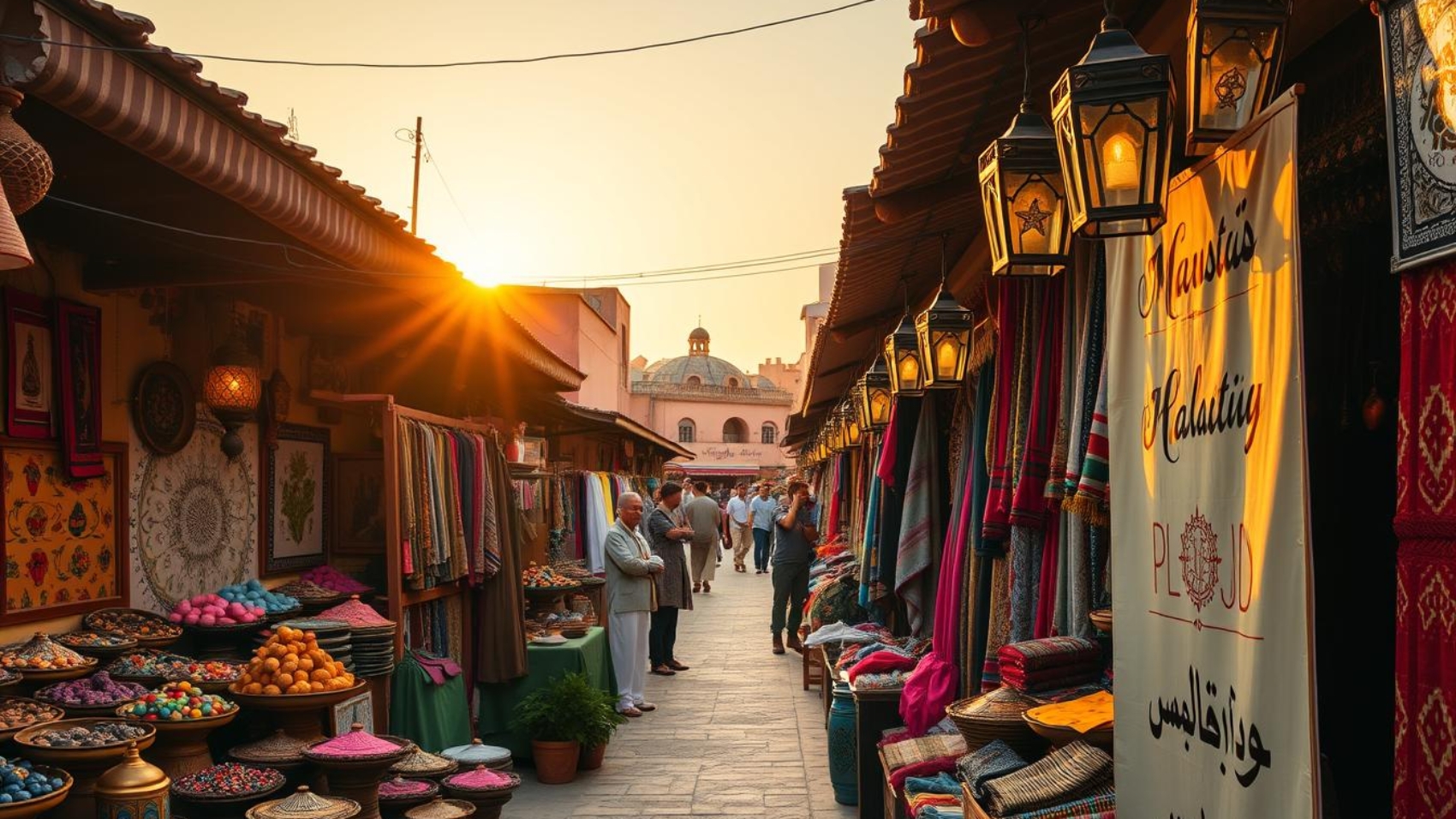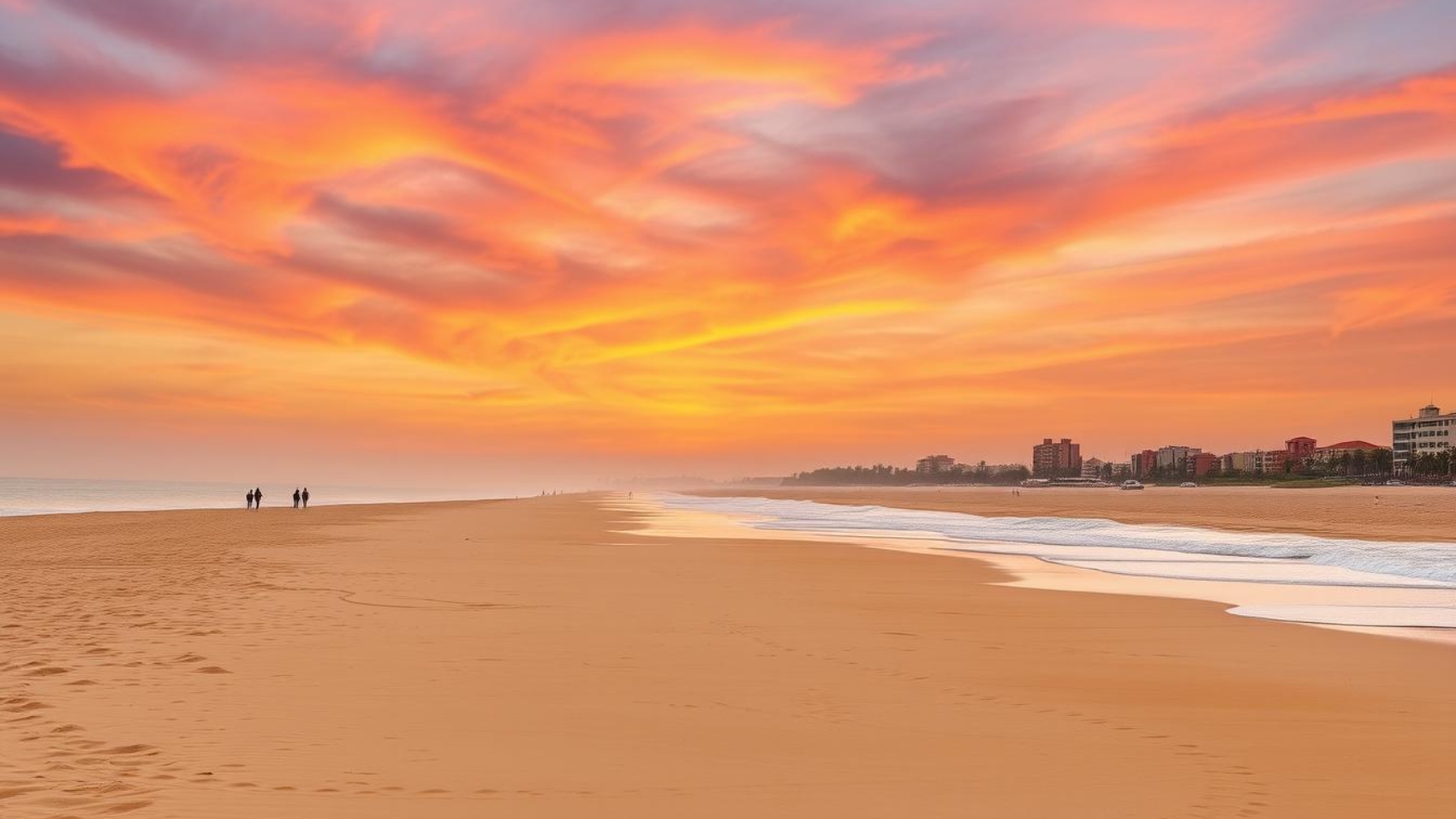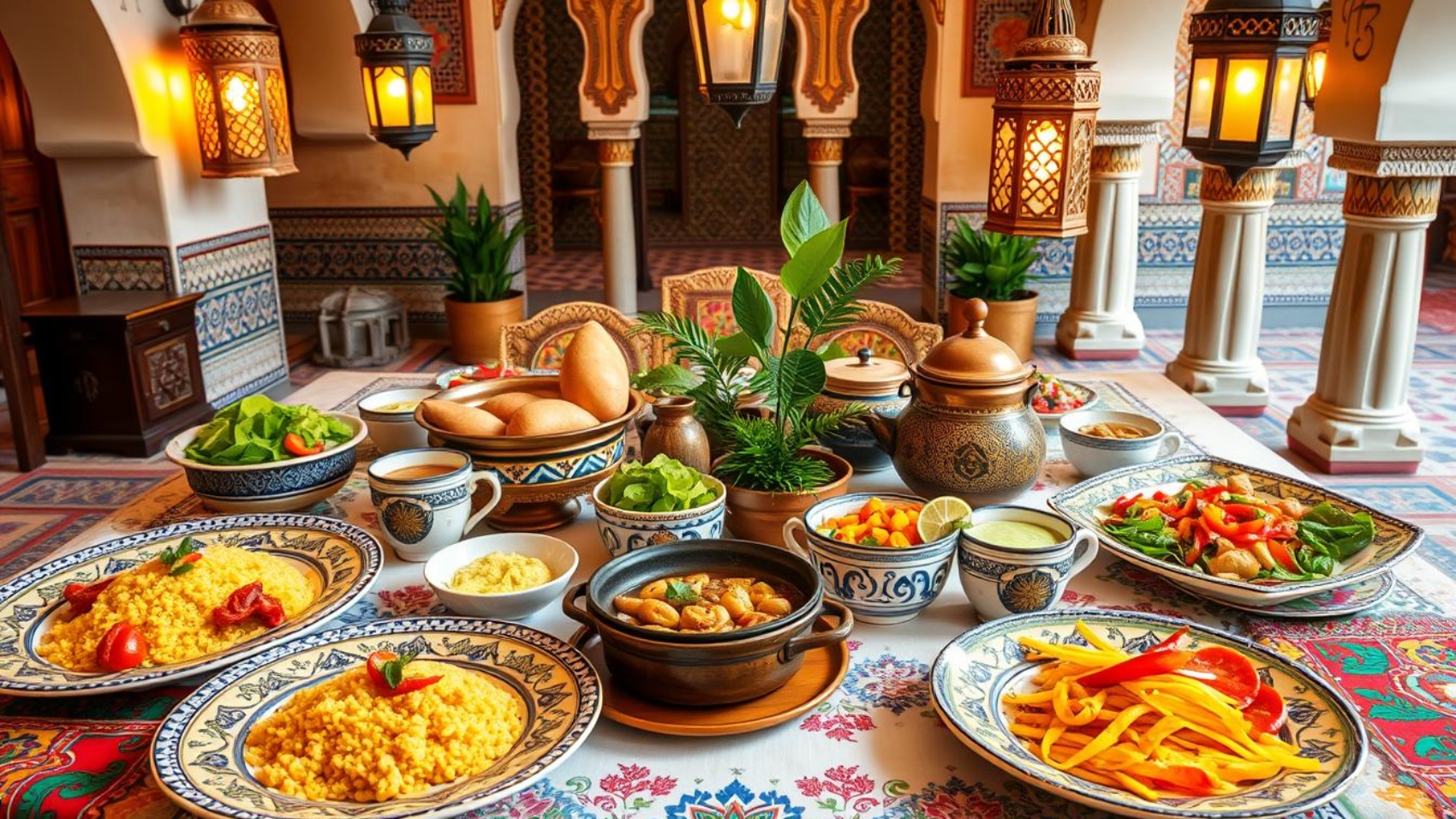Casablanca is a city on Morocco’s Atlantic coast that draws in visitors. It mixes modern life with a deep cultural heritage. People come to see its amazing buildings, lively areas, and tasty food that shows off Moroccan culture.
This city is more than a place to visit. It’s a lively experience filled with beauty. You’ll see famous landmarks, feel the culture, and enjoy the friendly vibe.
Introduction to Casablanca
Casablanca is a lively city in Morocco, known for its mix of culture and history. It’s a key spot for both business and culture. Exploring its geography and history shows why it’s so fascinating.
Geographic Overview
Casablanca is on Morocco’s west coast, about 80 miles from Rabat. It’s the biggest city, sitting by the Atlantic Ocean. This makes it a major port and trade center.
Travelers interested in Casablanca’s geography will love its busy waterfront. It shows the city’s mix of old and new.
Historical Significance
Casablanca’s history goes back to the 7th century. The city changed a lot, especially during the French colonial era in the early 1900s. These changes made it unique, with a blend of architecture and culture.
For those visiting Casablanca, seeing its historical sites is a must. It helps understand how the past shapes today’s city.
Exploring the Landmarks of Casablanca
Casablanca is a lively city with a rich history and beautiful buildings. It has many landmarks that show off Morocco’s culture and heritage. These spots mix history with stunning architecture, making them perfect for visitors.
The Hassan II Mosque
The Hassan II Mosque is a wonder of Islamic design. Its tall minaret reaches 210 meters, making it one of the biggest mosques globally. Its location by the sea makes it even more special. Non-Muslims can take tours to learn more about this architectural wonder.
Royal Palace of Casablanca
The Royal Palace of Casablanca is not open to the public. But its beautiful exterior and gardens are worth seeing. It’s the King of Morocco’s official home and shows off Moroccan style. It’s a key spot for anyone exploring the city.
The Old Medina
The Old Medina is a different world compared to Casablanca’s modern side. It has narrow streets, bustling markets, and cozy cafes. Here, you can dive into local life, find unique gifts, and try Moroccan food. Walking through its alleys lets you feel the true spirit of Casablanca.
Casablanca, Morocco: A Cultural Melting Pot
Casablanca is a lively city that mixes many cultures. It’s known for its art, music, and food, showing Morocco’s rich heritage. This part talks about the city’s art, music, and tasty Moroccan dishes.
Art and Music Scene
The art in Casablanca is both new and old, with many types of art on display. You can see works by local and international artists in many galleries. The city also has street art that makes it look beautiful.
The music in Casablanca is just as exciting. It mixes traditional Moroccan tunes with jazz and pop. Cultural events all year add to the city’s artistic vibe, drawing in artists and fans.
Traditional Cuisine
Moroccan food is a big part of Casablanca’s culture, with its bold tastes and spices. You can try couscous, tagines, and pastilla at local spots and markets. Each dish shows off Morocco’s varied food traditions.
Trying these dishes is a must when visiting Casablanca. It’s not just about the food; it’s about the lively food scene too.
Natural Attractions Around Casablanca
The Casablanca coastline is a stunning area that showcases the beauty of Morocco’s Atlantic shores. This picturesque region invites visitors to explore its vibrant beaches and engaging outdoor activities in Casablanca. The coastal environment serves as a perfect backdrop for both relaxation and adventure.
The Stunning Atlantic Coastline
The coastline near Casablanca boasts gorgeous beaches, such as Ain Diab, where sunbathers can unwind at lively beach clubs. Adventurous spirits will find numerous water sports available, including surfing and windsurfing, all while soaking in the breathtaking views of the vast Atlantic Ocean.
Parks and Recreational Areas
For those seeking tranquility, the parks in Casablanca offer plenty of green spaces to enjoy. One notable park is the Parc de la Ligue Arabe, which features lush gardens, elegant fountains, and captivating art installations. These areas provide a peaceful escape for residents and travelers looking to take a break from the bustling city life.
Shopping and Nightlife Options in Casablanca
Casablanca is alive with energy, drawing in both locals and visitors. Its shopping and nightlife are top-notch. The city’s markets and night spots showcase Moroccan culture beautifully.
Local Markets and Souks
Shopping in Casablanca is a chance to see Moroccan souks up close. These markets are filled with goods that tell the story of Morocco’s heritage. You can explore narrow alleys lined with:
- Handcrafted textiles
- Intricate ceramics
- Exotic spices
- Artisanal crafts
The markets buzz with life, offering a colorful shopping experience. Talking with local vendors makes the trip even more special.
Popular Nightlife Spots
When the sun goes down, Casablanca comes alive. The city boasts trendy bars and clubs, especially in the Marina and Gauthier district. Here, you’ll find:
- Modern restaurants with amazing food
- Chic lounges with creative drinks
- Dance clubs with a lively vibe
These spots are a hit with both locals and tourists. They promise nights filled with music, laughter, and friendship.
How to Get Around Casablanca
Exploring Casablanca is a thrilling mix of old and new. Getting around the city is key to enjoying its sights. You can choose from public transit or car rentals, making travel easy for everyone.
Public Transportation
Casablanca has a great public transport system. It includes trams and buses that reach different areas. The tram is especially good at avoiding traffic, making trips to attractions smooth.
Using public transport is a budget-friendly way to see local life. It’s a great choice for those who want to dive into the city’s culture.
Car Rentals and Taxis
If you prefer to travel on your own, renting a car is a good option. Many car rental companies are available in the city. They offer freedom in your travel plans.
Taxis are also a common choice for quick trips. Just remember to agree on the fare before you start to avoid any surprises.
Conclusion
Looking for your next adventure? Casablanca, Morocco, is the perfect place. This city shows how old traditions and new ways live together. You can see this in the stunning Hassan II Mosque and the lively Old Medina.
Visiting Casablanca means diving into Moroccan culture. You can try local foods or enjoy the city’s nightlife. The beautiful Atlantic coast is great for relaxing. And, don’t miss the unique shopping in local markets and souks.
Traveling to Casablanca is like discovering Morocco itself. It’s a city that mixes history with modern life. Every visitor leaves with unforgettable memories and a new love for this amazing place.
FAQ
What are the must-visit landmarks in Casablanca?
Don’t miss the stunning Hassan II Mosque and the Royal Palace of Casablanca. Also, explore the historic Old Medina. Each place gives a unique view of the city’s culture and architecture.
How can I best experience Moroccan cuisine in Casablanca?
To enjoy real Moroccan food, go to local restaurants and markets. Try dishes like tagines, couscous, and pastilla. Don’t forget to check out the souks for spices and local ingredients.
What is the nightlife like in Casablanca?
Casablanca’s nightlife is lively, especially in the Marina and Gauthier district. You’ll find cool bars, clubs, and lounges for both locals and visitors. It’s a great place for a fun night out.
How can I get around the city?
Casablanca has a good public transport system, with trams and buses. You can also rent a car or take taxis for more freedom in exploring the city.
Are there outdoor activities available near Casablanca?
Yes, Casablanca is near beautiful beaches like Ain Diab for water sports. The city also has parks for leisure and relaxation.
What is the best time to visit Casablanca?
The best times are spring (March to May) and fall (September to November). The weather is mild and perfect for seeing the city’s sights and enjoying outdoor fun.
Is Casablanca a family-friendly destination?
Absolutely! Casablanca has lots for families, like parks, beaches, and cultural spots. Kids will love the markets and beach activities.
What should I know about Casablanca’s culture?
Casablanca’s culture mixes traditional Moroccan and modern styles. The city is known for its art, music, and food. It’s a great place to dive into local life.


